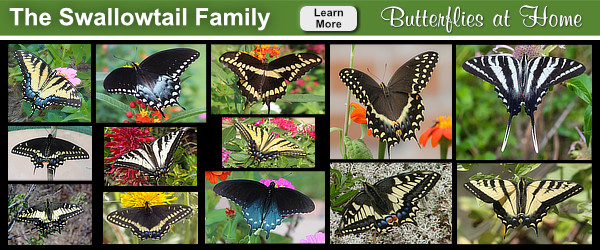Pipevine Swallowtail Butterfly
Characteristics, Identifcation and Size
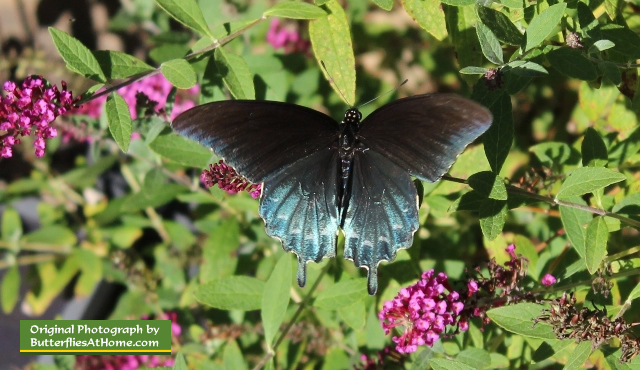 |
The Pipevine Swallowtail (Battus philenor) is black with a single row of pale spots near wing edges. This beautiful butterfly is sometimes called the "Blue Swallowtail". The male has iridescent blue hind wings, and the female a lighter blue coloring.
Birds find the caterpillar and butterfly to be distasteful, as the Pipevine plant that it eats contains an acid toxic to some animals.
Other butterflies mimic the Pipevine Swallowtail, such as the Black Swallowtail, Spicebush Swallowtail and Red-Spotted Purple, and derive some protection from predators by duplicating the Pipevine's coloration.
Its size is in the 2.75" - 4.0" range.
Distribution and Habitat
It is seen in the southern United States, from the Gulf Coast north to near Chicago, and from the Atlantic seaboard west to Arizona. The butterfly is common in open habitats and gardens, and produces 2-4 broods per year.
Nectar and Host Plants Used by the Pipevine Swallowtail
The Pipevine Swallotail uses Pipevine (Dutchman's Pipe) as its host plant.
Nectar plants frequented by the Pipevine Swallowtail include Butterfly Bush, Swamp Milkweed, Mexican Sunflower, and Phlox. It prefers nectar plants in the pink, purple and orange color range
Pipevine Swallowtail Life Cycle Stages and Times
| Stage | Typical Duration |
| Egg stage | Generally 4 to 10 days, depending on temperature and host plant |
| Caterpillar (larval) stage | 3 to 4 weeks |
| Chrysalis (pupal) stage | 10 to 20 days (except for overwintering pupae) |
| Adult butterfly stage | 6 to 14 days |
Pipevine Swallowtail Butterfly in East Texas |
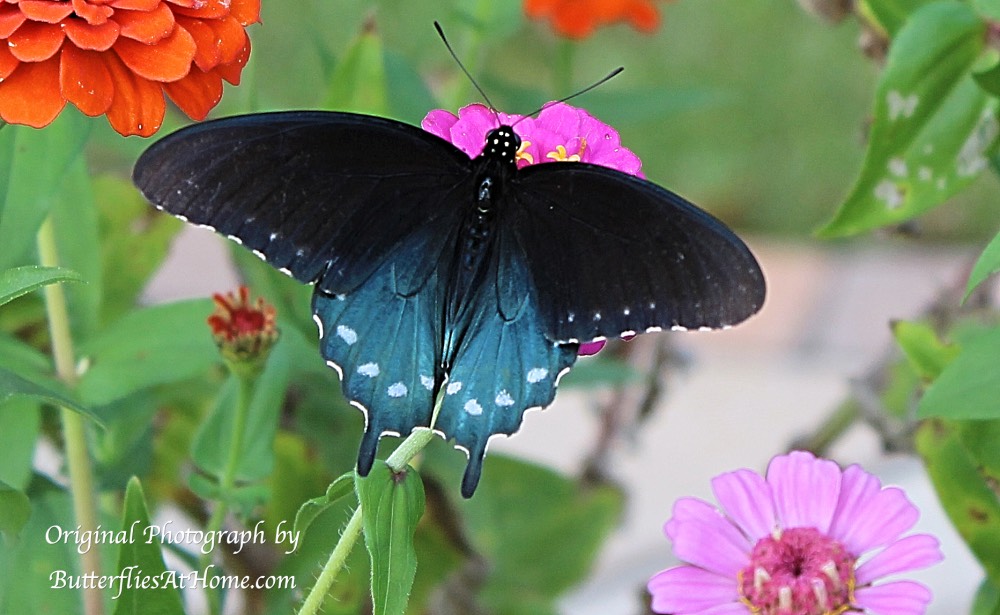 |
Pipevine Swallowtail Butterfly on Zinnias |
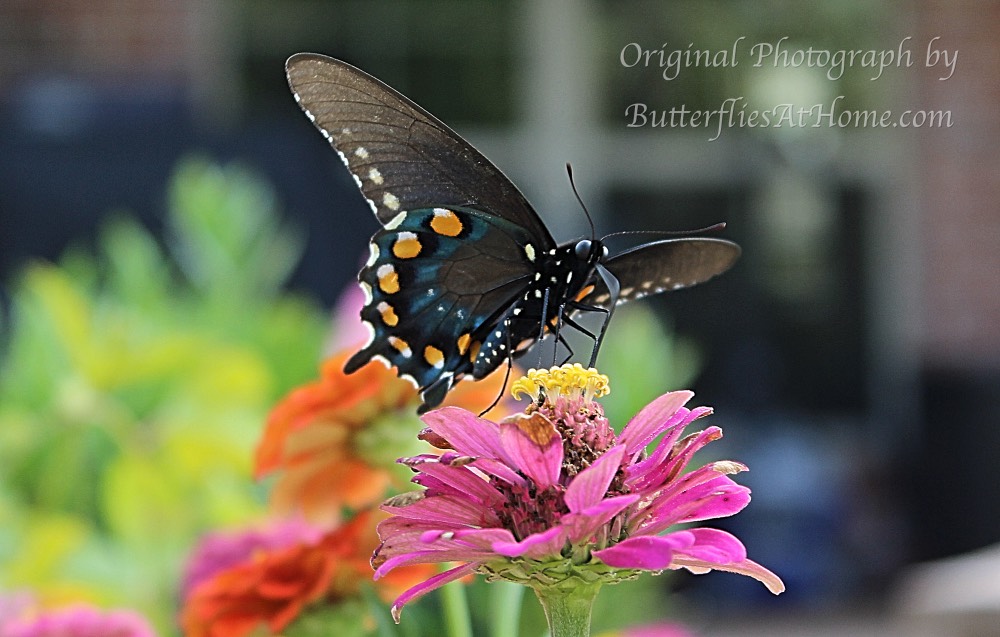 |
Pipevine Swallowtail Butterfly (dorsal view) |
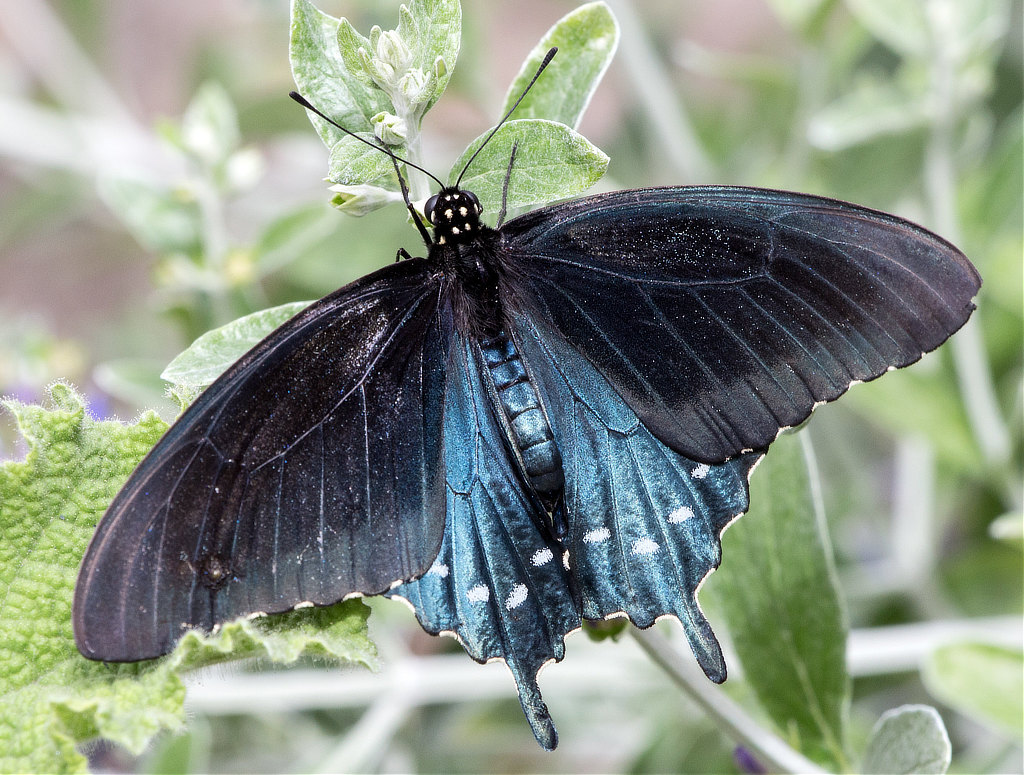 |
Pipevine Swallowtail Butterfly (ventral view) |
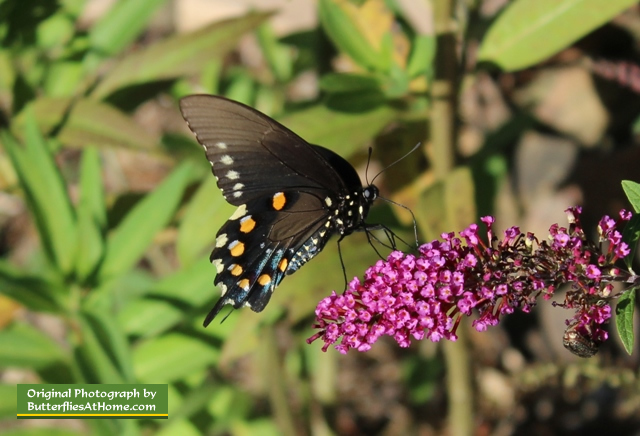 |
 |
|||
Check out these popular butterfly items at our Amazon Store |
|||
| Kaufman Field Guide to Butterflies of North America  |
The Life Cycles of Butterflies |
Peterson First Guide to Butterflies and Moths of North America  |
|
Outdoor Butterfly Hanging Flag |
Butterfly Habitat Cage |
Butterfly Sterling Silver Pendant |
|
|
|||
Pipevine Swallowtail Butterfly exhibiting its beautiful bluish body |
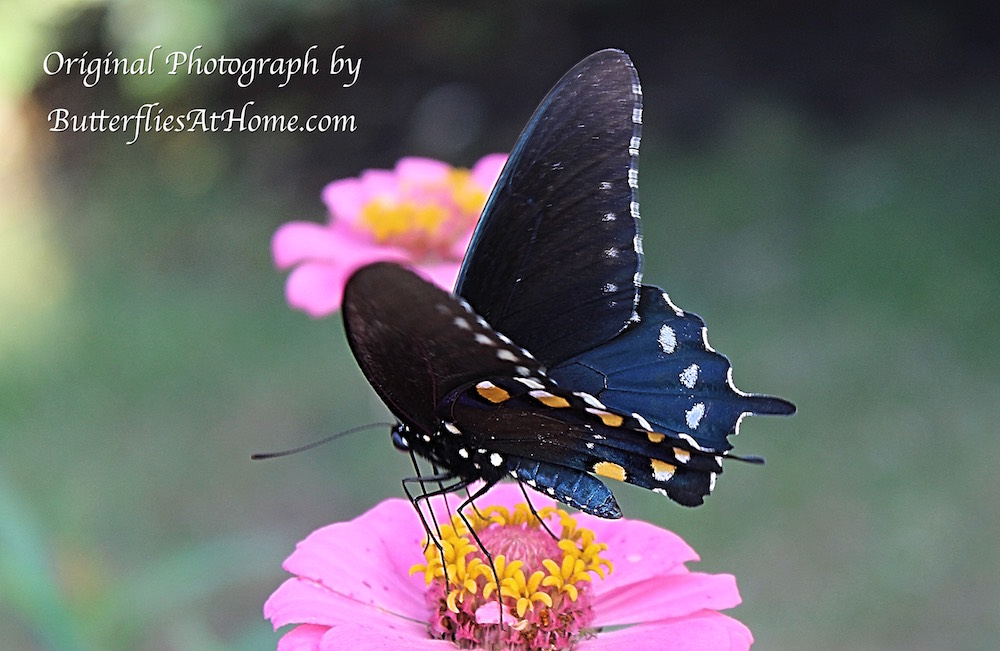 |

